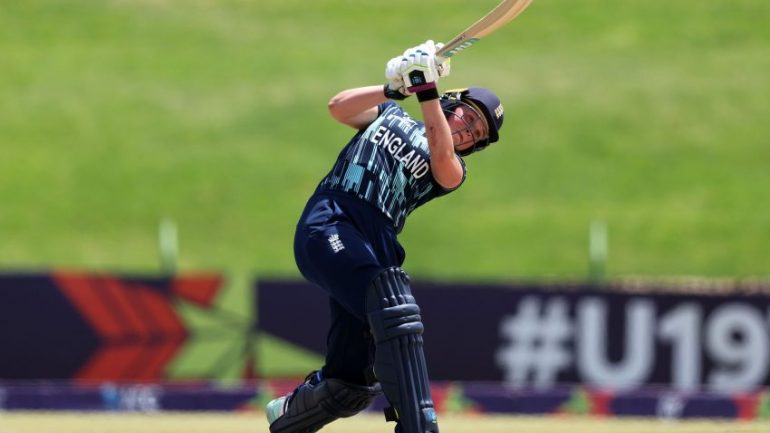Where is Cricket going?
The announcement of England teams to tour New Zealand only adds to the sense of confusion and lack of unity in the game of cricket as it embarks on a new year.
My Argument
The ECB publishes no fewer than four lists for one tour*. Once upon a time a single one was the norm. Not now. Not only do we have to cater for two match formats, ODIs and T20s, but some players are unavailable for the entire tour.
(* Five, if you separate out the A-team’s ODI and T20 teams.)
Why? Because some of the elite players have chosen to compete in the WPL in India, which insists on participation in the full programme or not all all. In other words, it places itself above the needs and wishes of all other parts of the cricketing world and indeed the ICC, which is supposed to be in control of affairs.
Jonathan Finch, the Director of England Women’s cricket, admits as much when he says: ‘All players participating in the WPL were given our backing to remain in India for the duration of the tournament’.
We might wonder whether a foreign tournament is really more important than a tour by the national team. So we have the strange formulations of an ‘IT20 squad for first-third matches’ and another ‘squad for fourth and fifth matches’.
One excuse trotted out in the other sport I cover, rugby, is that a player’s career is short and liable to a sudden end through injury. So the individual has the right to seize every opportunity to make money wherever possible.
That’s hardly the case in cricket. Take the case of James Anderson or even Fred Titmus (England and Middlesex), who played first-class cricket across five decades (1949-1982). The players who are allowed this dispensation aren’t followed by the captain, Heather Knight, or Lauren Bell, who both gave up their participation in the Indian tournament. Loyalty in the right place.
The ECB can argue that it gives more players the chance to represent the country, but that is a watery excuse, and can hardly please New Zealand cricket, which see its incoming tour given second place to the WPL.
Jon Lewis, the head coach, speaks of ’a very congested and demanding schedule in 2024/25’. Again, we have to wonder why that is the case. Could it possibly be that neither the ICC nor the ECB has any proper control of events? Is cricket so popular around the world that spectators simply can’t get enough of it and keep begging for more?
The backing The Hundred gets seems to argue a different case. Only the shortest form of the game yet devised – I eagerly await the advent of the 5-over code to take over the cricketing world – shows where the ECB believes salvation lies.
And the unequal number of ODIs (three) and T20s (five), only underlines the inequality of the two codes to the official mind.
And – desperately hard to believe – Lewis will himself be coaching in the WPL. No wonder he is so happy for some of is players to be there as well. I try in vain to think of a parallel situation where a head coach has led such a double life. He claims ‘the tour (to NZ) is another important step in our build-up to the next T20 World Cup’. But not important enough for him to place himself fully at England’s service.
Finch adds: ‘The short window of just one or two days between the end of the WPL and the first IT20 in New Zealand [means] we have needed to balance the challenges of long-term workload management for players, allowing participation in the WPL and ensuring we give clarity to the group of players preparing for the first three IT20s.’
Questions: Why is there only a short window available? Why the conflict? Why allow participation in the WPL at all? As for ‘clarity’, let’s hope the players are all intelligent enough to know exactly where they stand.
I have my own answers, but they involve accusations against BCCI that I cannot prove. To me that organisation seems to be in charge of World Cricket. The lords of all we survey.
Please, Miss, what’s a Test Match?
Needless to say, there is no sign of a test match among the fourteen fixtures scheduled. NZ cricket announced long ago that it was formally rejecting the possibility of introducing tests for its women players, so once more we will be limited to a series of ODIs and T20s.
The declared wish to reinstate test matches to their former glory is again delayed for the foreseeable future.
Some Good News
At least an A-side will once more accompany the elite squad down under. This allows a wider selection of players to enjoy the benefits of a tour overseas. It includes highly experienced players who have just missed out on a place in the elite side (for example, Georgia Adams, Alice Davidson-Richards, Emma Lamb and Mady Villiers); one returning from a long-term injury, Tash Farrant, and a string of highly promising youngsters who took part in the most recent Under 19 World Cup. At their head Grace Scrivens, who is once more honoured with the captaincy of the ODI side for three matches.
But the group, only 14 strong, has to be split according to the two codes. They are now considered too specialised to allow the same players to gel into one over-arching squad. So Kirstie Gordon captains the T20 squad for the remaining three games, which will take place in the far distant Queenstown, deep in South Island, but a popular holiday resort for North Islanders. That’s the attractive ground that has aeroplanes taking off just above the batter’s head.
Another Reorganisation
Meantime all these players are liable to find themselves returning home to a reshaped structure. Raf Nicholson has already dealt with the matter with wisdom and detail, so I’ll confine myself to few further comments.
Cricket remains one of the very few team sports to retain a county framework. That is now being reinstated after the development of the eight regions, which we falsely assumed were here to stay.
But once again competition rears its ugly head. Only eight counties will be supported (for some reason the MCC is among the candidates), so it doesn’t take much guessing which of them will find favour. And few if any of them can boast of profits.
Cricketing folk had found the regional franchises impersonal, players brought randomly together from different counties. But a central reason for Clare Connor’s change of direction was precisely the huge imbalance between the many counties represented. England’s elite squad was not benefiting from that structure. We can only hope that yet another change of direction will lead finally to a solution that benefits everyone. For optimists only?
Note: the full team-lists can be found at 4theloveofsport.co.uk/2024/02/02/england-women-squads-named-for-white-ball-tour-to-new-zealand/









